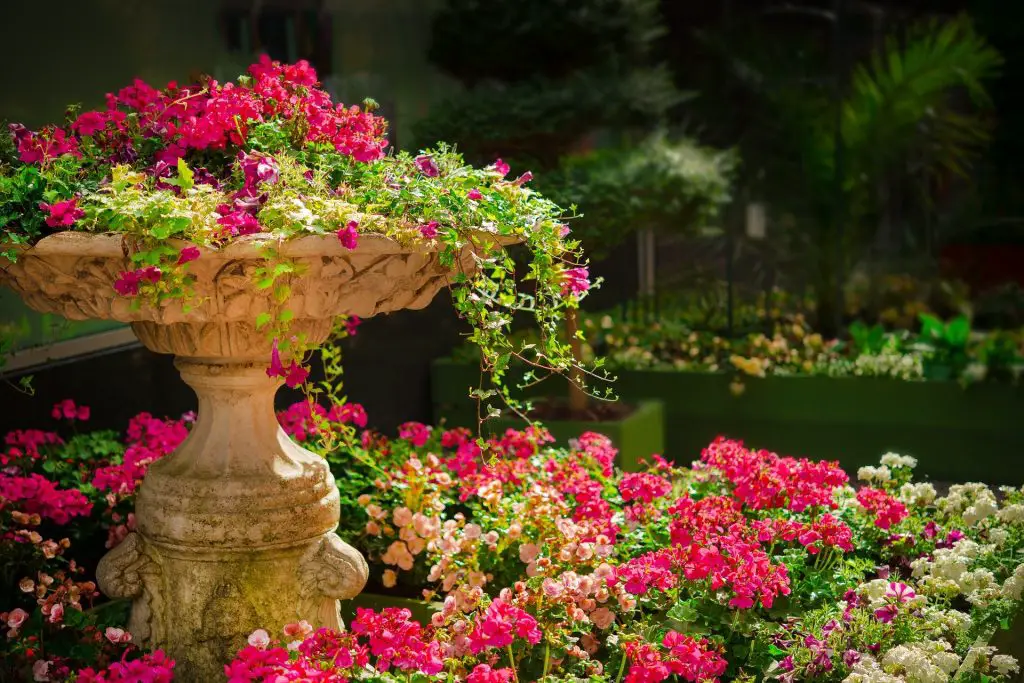A garden is a great place to relax and unwind! Not only does a beautiful garden add to your home’s aesthetic appeal, but it’s also a refreshing place where you can enjoy. Want to transform your outdoor space into a beautiful garden? Choosing the best plants for your garden is the first step. This depends on a couple of factors, such as how much outdoor space you have. You will also have to consider different soil types and the kind of look you want to create for your garden. It’s always best to choose plants that look beautiful and don’t require too much maintenance.
Here are some useful tips to keep in mind when choosing the best plants for your garden.
Assess the Size of Your Outdoor Space
When deciding the best plants for a garden, start by assessing your outdoor space. Most plants require their own personal space to flourish. If you have less space, you will be limited in terms of variety. Measure the size of your plot with a take measure to get an idea of the plants you can go for. This will help you make decisions regarding garden furniture as well. You will know exactly where you want your garden borders and plant beds to be and what you can achieve from your planting scheme. Even if you’re lacking in space, don’t be discouraged. It’s possible to create a thriving garden in any amount of space; you just have to get creative.
Consider Soil Type
Different plants thrive on different soil types. In order to choose the best plants for your garden, you need to figure out what your plot’s soil acidity level is. Usually, soil is pH neutral and has a value of 7.0. Anything below this level is acidic, and anything above is alkaline. You can also purchase pH testing soil kits in good garden centers. These are easy to operate and provide valuable information that will help the planting process. The texture and consistency of the soil are also very important. This will determine the level of nutrition and drainage your plants will receive. For example, clay soil has poor drainage but is great for many kinds of shrubs and vegetables. Sandy soil suits flowers like tulips and rooted vegetables such as parsnips and carrots. Loamy soil is usually the most preferred soil type for gardeners. It has a good structure and texture and contains defining qualities of all other soil types.
Read Also: 7 Best Plants for Small Garden
Pick Plants That Suit Your Climate
When considering garden and best plants, always choose plants that fit your climate. For example, if you live in a cool or temperate region, it’s best to choose resilient shrubs and flowers such as ostrich fern or daylilies. These can easily survive in fluctuating or low temperatures. If you live in a tropical or sub-tropical climate where it’s warm and humid most of the year, choose plants that thrive in such environments. Some options include orchids, amaranths and different fern species. If you live in a cold region, also take frost levels into account. Calculate when the first and last frost of the season is due and plan when you plant according to that. Usually, young plants respond poorly to low temperatures; hence, knowing when it will snow will enable you to plan accordingly.
Take Precipitation Levels into Account
Rainfall is also extremely important as it determines how well your plants will ultimately do. If the region where you live receives regular rainfall, your plants won’t need regular watering. But if you live in a sunny region with scarce rainfall, your plants may require watering 2-3 times a day to prevent them from drying out. Do your research and calculate your annual average rainfall before deciding on plant choices.
Read Also: Cheap Garden Ideas for Your Outdoor Space
Create a Color Scheme
When drawing your garden plan, also keep a color theme in mind. Your color scheme will set the tone of your garden space. If you want a more orderly look, stick to three different colors in one garden bed or area. If you want a wilder look, you can opt for more colors. If you want a more monochromatic feeling, go for lesser. Also, consider the different shapes, sizes and textures of each plant. If you have shorter, rounded bushes in one area of your garden, including taller and thinner plants in between can make it look interesting. If you have plants with thin leaves in one area, you can pair them with plants with thicker leaves to make them appealing.
Read Also: 8 Fabulous Modern Garden Designs and Ideas
Think of All Seasons
Even if your garden does not flower all year, you still view it all year. Therefore, choose plants that bloom in different seasons. This way, you will have flowers all year round. You can also add varieties that thrive in winter to make your garden alive even in the winter. These are mostly evergreen plants that hold on to their leaves despite the weather. Also, in order for your plants to grow well, consider the direction of the sun. In areas of the garden that get the most sun, choose plants that require more sunlight. For areas that don’t get much sunlight, choose options that can thrive with less sun.
Take Size into Consideration
When you are going to choose the best plants for your garden, also consider the plants mature size. This is a common problem most gardeners face, sometimes even experienced ones! Sometimes, we see the current size of the plant in the pot and plan according to that. But plants get much larger once they are planted underground. Make sure you know how large your plant will get when it’s fully grown, so your garden space does not get too crowded.



